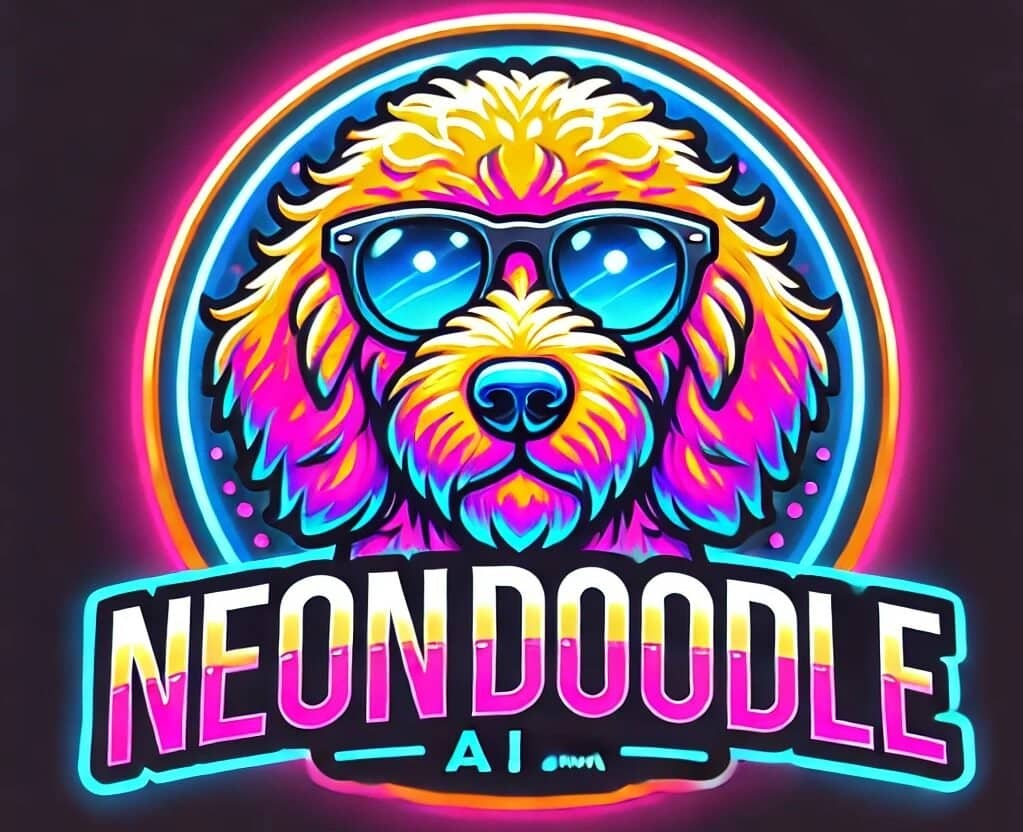
Imagine Sparky, your energetic terrier,, wearing a high-tech collar. This collar tracks his heart rate, activity, and sleep. If Sparky’s heart rate goes up too high, you’ll get a warning. Is this the future of pet care, or are we going too far?
Artificial intelligence (AI) is changing many areas of our lives. It’s also changing how we care for our pets. AI uses computers to analyze data, make predictions, and automate tasks in pet care.
AI can make pets’ lives better in many ways. But it also raises big questions. What do we do with all the pet data? Are we relying too much on technology? AI is exciting, but we need to think about ethics, data privacy, and not relying too much on it.
AI-Powered Pet Health Monitoring: A Pawsitive Step?
Wearable tech is now for pets too! They can wear smart collars and devices. These gadgets collect lots of data about your pet’s health and activity. They use algorithms to track vital signs, activity levels, sleep patterns, and even emotional states of pets.
Early Disease Detection: Catching Problems Before They Escalate
Imagine finding a disease early. AI can help with that. AI algorithms can analyze pet health data. They look for early signs of illness or distress before they become serious.
For example, sudden changes in activity levels or sleep patterns could mean it’s time for a vet visit. These algorithms find unusual patterns. They might notice changes in heart rate or activity levels. These small changes could be early warning signs. With AI, vets and pet owners can act fast.
Personalized Nutrition Plans: Tailoring Diets for Optimal Wellness
Every pet is different. A Great Dane has different needs than a tiny Chihuahua. AI can create custom diet plans. These plans consider breed, age, activity level, and health.
An AI program can suggest the perfect food and portions for your pet. AI analyzes genetic data, microbiome profiles, and individual health markers. This creates highly precise nutrition plans. AI assistants can design meals, generate shopping lists, and even provide personalized recipes. This helps your pet stay healthy and happy.
The Data Privacy Question: Who Has Access to Your Pet’s Information?
Think about all the data these devices collect. Heart rate, location, activity levels – it’s a lot! Who gets to see this information? Is it safe? Recent research has uncovered several alarming issues with pet tech applications.
User location data was visible in certain applications
Many apps included tracking software that gathered information on users and their devices
Several apps violated data protection regulations by tracking users before obtaining consent
These vulnerabilities could potentially allow malicious actors to access sensitive information about both pets and their owners. Data security is a big worry. What if someone misused your pet’s data? To safeguard your pet’s information, consider the following precautions:
Use unique, strong passwords for pet health apps and devices
Carefully review app permissions and privacy settings
Be cautious about sharing location data and other sensitive information
Choose reputable pet tech providers with strong privacy policies
Stay informed about the latest developments in pet tech security. These are vital questions we must ask. As the pet tech industry grows, it’s crucial for pet owners to stay vigilant about data privacy and for regulators to address these challenges.
AI-Driven Pet Entertainment and Companionship: Is It a Substitute for Human Interaction?
AI is also changing how we entertain our pets. Smart toys, robotic pets, and virtual assistants are becoming popular. But are these high-tech gadgets good for our pets? Do they replace real human interaction? When selecting a smart toy for your pet, consider: Your pet’s size and play style
The toy’s durability and safety features
The level of challenge appropriate for your pet’s age and intelligence
Smart Toys: Keeping Pets Mentally Stimulated and Engaged
Bored pets can get into trouble. Smart toys can keep them entertained. These toys use AI to adapt to your pet’s play style.
Some toys even learn your pet’s preferences. The toys can adjust the difficulty as your pet learns. This keeps them challenged and engaged.
Robotic Pets: A Solution for Lonely Animals or a Poor Replacement for Affection?
Some pets get lonely when their owners are away. Robotic pets could be a solution. These robots can provide companionship.
They can play, interact, and even offer comfort. But can a robot replace real affection? It’s a tough question. For pets with serious separation anxiety, it might help.
The Risk of Over-Reliance: Are We Neglecting Real Interaction?

Technology is great, but it shouldn’t replace human interaction. The increasing prevalence of smart toys and AI-powered pet technologies has raised concerns.
It’s about over-reliance on these devices, potentially leading to neglect of real, meaningful interactions between humans and their pets. Pets need love, attention, and playtime with their owners. It is vital to maintain the bond with your pet.
Are we spending too much time with screens and not enough with our pets? Something to think about. The use of smart devices may have unintended consequences on pet behavior.
Some participants reported negative impacts on their pets’ behavior due to the introduction of these technologies. While smart pet technologies can provide valuable insights and convenience, it’s crucial to maintain a balance:
Use technology as a supplement, not a replacement for personal care and attention.
Prioritize direct interaction and playtime with pets.
Be mindful of how pets respond to smart toys and adjust usage according.
Regularly assess the necessity and impact of each pet tech device in use.
AI in Veterinary Medicine: Revolutionizing Diagnosis and Treatment?
AI is also transforming veterinary care. It’s helping vets diagnose and treat animals better than before. Let’s examine how AI is changing the game.
Enhanced Diagnostic Accuracy: Faster and More Reliable Results
AI can analyze X-rays and scans with amazing accuracy. AI-powered image recognition can spot diseases early. The result can be faster diagnoses.
This allows vets to start treatment sooner and improve outcomes. It is a true game-changer.
AI-Assisted Surgery: Precision and Minimally Invasive Procedures
Surgery can be scary, but AI can help. AI can assist surgeons during complex procedures. This leads to greater precision and accuracy.
AI can help with minimally invasive procedures. This could mean smaller incisions, less pain, and faster recovery for your pet.
Over-Dependence on Technology: Maintaining the Human Touch in Vet Care
Even with all this tech, vets still need to use their skills. Empathy, intuition, and experience are vital. A machine can’t replace a vet’s caring touch.
It is important to balance technology with human care.
Ethical Considerations and the Future of AI in Pet Care: Navigating the Unknown
AI in pet care is still new. One of the primary ethical concerns surrounding AI in pet care is the protection of sensitive data. AI-powered systems collect and analyze vast amounts of information about pets and their owners, raising critical questions about data privacy and security.
There are many ethical questions we need to consider. Veterinary practices must implement robust cybersecurity measures to safeguard this information from breaches or misuse. It’s crucial for practices to:
Inform clients about AI use and allow them to opt out if they have privacy concerns.
Limit data sharing and provide clear disclosures about how pet health data is obtained, stored, and used
Regularly audit and update AI systems to ensure ongoing compliance with data protection regulations What are the potential risks? How do we make sure AI benefits all pets? Currently, there is a lack of specific regulatory oversight for veterinary AI products, unlike human medical AI. The veterinary community must:
Advocate for the development of appropriate regulatory frameworks
Establish industry standards for the validation and testing of AI tools in veterinary contexts
Stay informed about legal changes and ensure ongoing compliance
Bias in Algorithms: Ensuring Fairness for All Breeds and Species

AI algorithms learn from data. If the data is biased, the algorithm will be too. Algorithmic bias in veterinary AI can stem from several factors:
Limited data diversity: AI systems trained on datasets that lack representation of various breeds, species, or health conditions may perform poorly for underrepresented groups.
Inherent biases in training data: Existing biases in veterinary practices or historical data can be perpetuated by AI algorithms.
Breed-specific assumptions: AI may inadvertently reinforce stereotypes or myths about certain breeds, leading to skewed recommendations. This could mean that certain breeds or species don’t benefit as much. Unchecked algorithmic bias can result in:
Misdiagnosis or delayed diagnosis for certain breeds or species
Unequal access to treatment options
Perpetuation of breed-specific health myths
Skewed research priorities and resource allocation We need to make sure AI is fair to all animals.
The Responsibility of Pet Owners: Making Informed Choices
As pet owners, we need to be informed. While AI offers numerous benefits, it’s crucial for owners to approach these innovations thoughtfully and critically. Pet owners should educate themselves about AI-powered pet care products before adoption. This includes:
Researching how the technology works
Understanding data collection and privacy policies
Evaluating the potential impact on their pet’s well-being It is important to understand the limits of AI technologies. Know the risks. Ask questions. Make smart choices for your pet.
The Future of Pet Care: Striking a Balance Between Technology and Tradition
AI has the potential to make pet lives better. Blending cutting-edge technology with traditional practices to create a more comprehensive and personalized approach to animal wellness. We need to strike a balance. Technology should enhance, not replace, the bond between pets and their owners. Regular physical interaction and playtime remain essential for a pet’s emotional well-being. Keep the bond between humans and animals strong. Use technology wisely. Holistic Approach: Combining tech-driven solutions with natural remedies and hands-on therapies can provide a more comprehensive approach to pet wellness.
Veterinary Oversight: While AI and telehealth services are valuable tools, they should complement rather than replace regular in-person veterinary check-ups. As we move forward, the key to successful pet care lies in leveraging technology to enhance traditional practices, not replace them. By striking this balance, we can ensure that our pets receive the best possible care, combining the wisdom of traditional methods with the innovations of the digital age. The future of pet care depends on it.
Conclusion
AI offers both benefits and risks for our pets. AI can improve health monitoring and entertainment. But we must consider data privacy and over-reliance on tech.
Responsible innovation and ethical considerations are vital. By thoughtfully integrating these advancements, the pet care industry can create a future where pets receive the best possible care. Stay informed. Make smart choices about using AI for your pets. Learn more and consider the possibilities, before deciding.
Is AI right for your pet? Find out more today. Start your research and protect your best friend.


